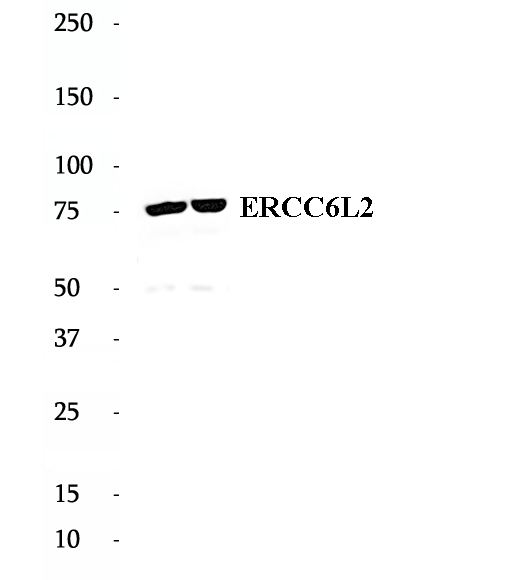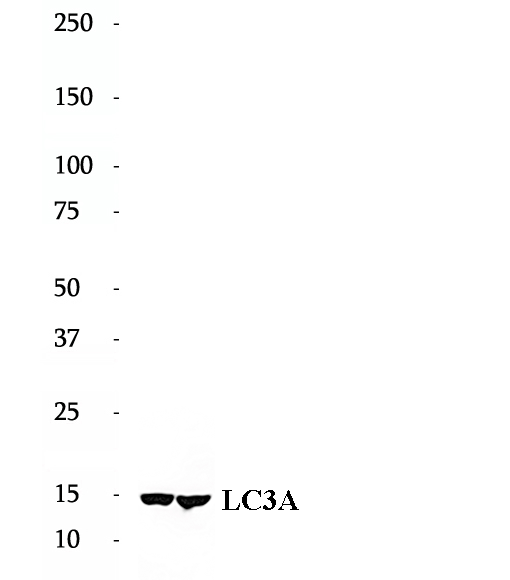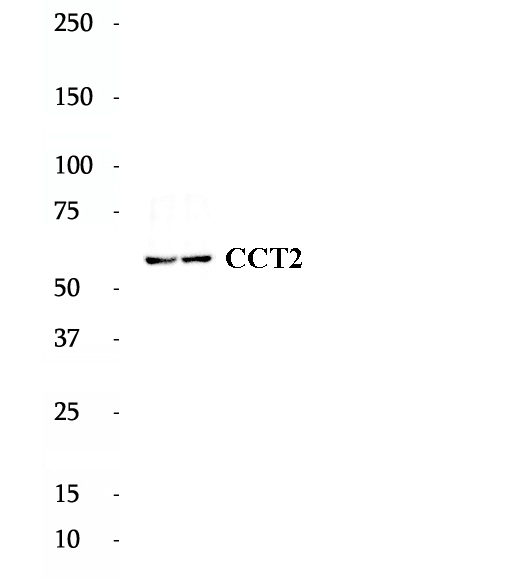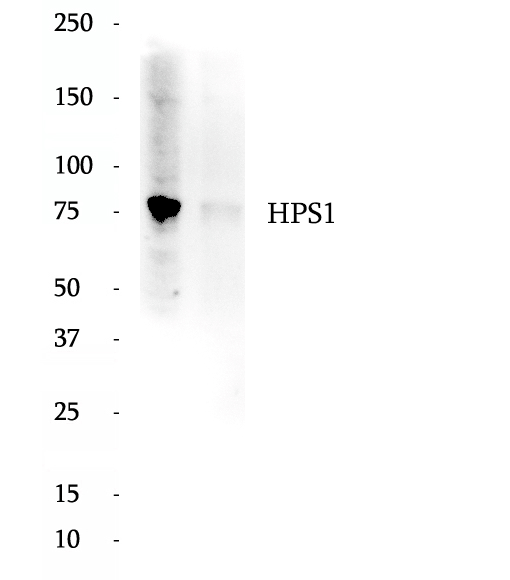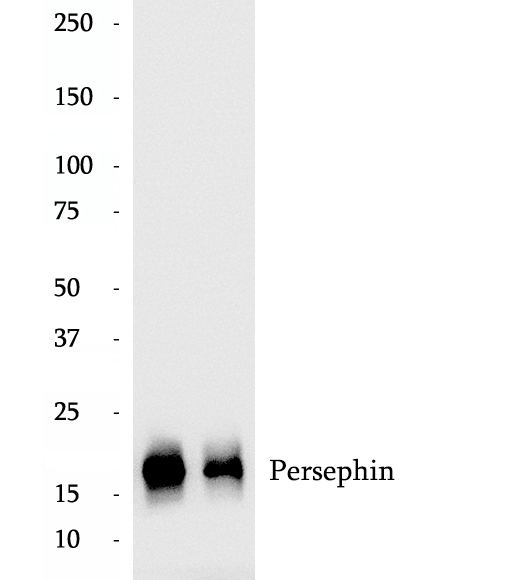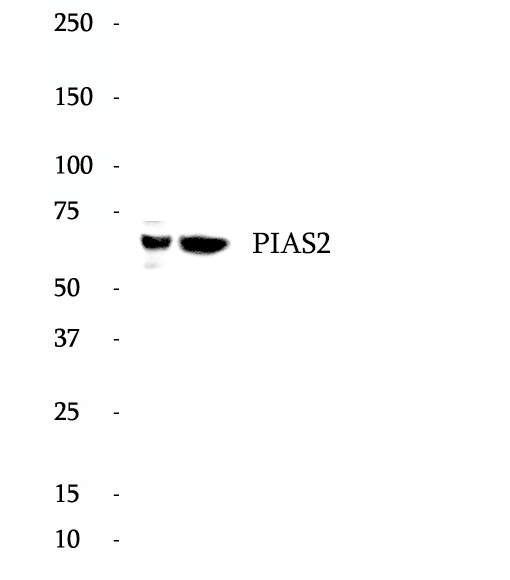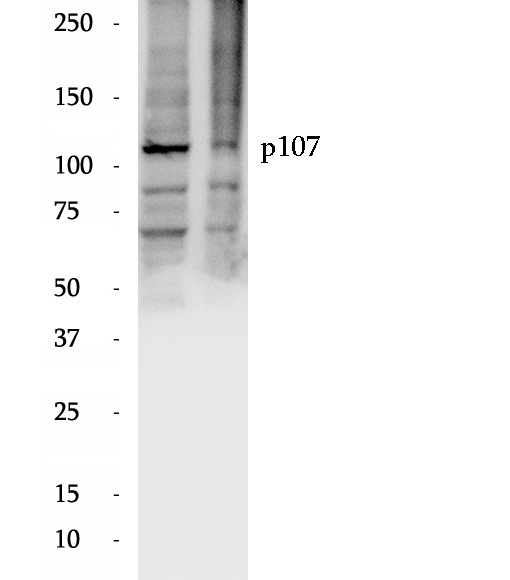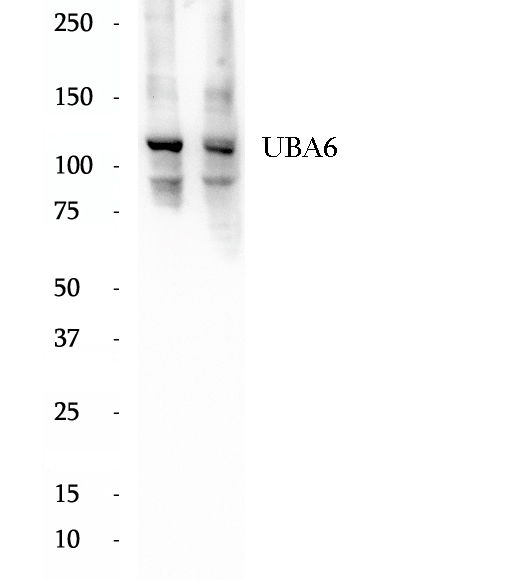|
BP61566
|
Anti-ERCC6L2 antibody
|
|
|
|
|
ERCC6L2, also known as RAD26L or C9orf102 belongs to the SNF2/RAD54 helicase family and is expressed in bone marrow. C9orf102 may be involved in early DNA damage response. C9orf102 is phosphorylated by NEK6. C9orf102 exists some isoforms with the molecular weight 177, 80, 60, 40 kDa.
|
|
BP62585
|
Anti-LC3A antibody
|
|
|
|
|
LC3A, also named as MAP1LC3A, LC3, MAP1ALC3 and MAP1BLC3, belongs to the MAP1 LC3 family. LC3A is one of the light chain subunits and can associate with either MAP1A or MAP1B which are microtubule-associated proteins that mediate the physical interactions between microtubules and components of the cytoskeleton. In cell biology, autophagy, or autophagocytosis, is a catabolic process involving the degradation of a cell's own components through the lysosomalmachinery. It is a major mechanism by which a starving cell reallocates nutrients from unnecessary processes to more-essential processes. Two forms of LC3, called LC3-I (17-19kd) and -II (14-16kd), were produced post-translationally in various cells. LC3-I is cytosolic, whereas LC3-II is membrane bound. The precursor molecule is cleaved by APG4B/ATG4B to form the cytosolic form, LC3-I. This is activated by APG7L/ATG7, transferred to ATG3 and conjugated to phospholipid to form the membrane-bound form, LC3-II. The amount of LC3-II is correlated with the extent of autophagosome formation. LC3-II is the first mammalian protein identified that specifically associates with autophagosome membranes. MAP1LC3 has 3 isoforms MAP1LC3A, MAP1LC3B and MAP1LC3C. MAP1LC3A and MAP1LC3C are produced by the proteolytic cleavage after the conserved C-terminal Gly residue, like their rat counterpart, MAP1LC3B does not undergo C-terminal cleavage and exists in a single modified form. This antibody is specific to LC3A.It recognize both LC3A-I and LC3A-II.
|
|
BP60738
|
Anti-CCT2 antibody
|
|
|
|
|
CCT2 is a gene encoding a molecular chaperone that is a member of the chaperonin containing TCP1 complex (CCT), also known as the TCP1 ring complex (TRiC). The switch of CCT2ʹs role from a chaperonin to a specific aggrephagy receptor is achieved by CCT2 monomer formation. CCT2 functions independently of ubiquitin and the TRiC complex to facilitate the autophagic clearance of solid protein aggregates. CCT2 has 2 isoforms with the molecular mass of 53 and 57 kDa.
|
|
BP62224
|
Anti-HPS1 antibody
|
|
|
|
|
Hermansky–Pudlak syndrome 1 protein is a protein that in humans is encoded by the HPS1 gene. This gene encodes a protein that may play a role in organelle biogenesis associated with melanosomes, platelet dense granules, and lysosomes. The encoded protein is a component of three different protein complexes termed biogenesis of lysosome-related organelles complex-3, BLOC4, and BLOC5. Mutations in this gene are associated with Hermansky–Pudlak syndrome type 1. Multiple transcript variants encoding distinct isoforms have been identified for this gene; the full-length sequences of some of these have not been determined yet.
|
|
BP63503
|
Anti-Persephin antibody
|
|
|
|
|
Persephin is a neurotrophic factor in the glial cell line-derived neurotrophic factor family. Persephin shares around a 40% similarity in amino acid sequence compared to GDNF and neurturin, two members of the GDNF family.
|
|
BP63651
|
Anti-PIAS2 antibody
|
|
|
|
|
PIAS2 functions as an E3-type small ubiquitin-like modifier (SUMO) ligase, stabilizing the interaction between UBE2I and the substrate, and as a SUMO-tethering factor. PIAS2 also plays a crucial role as a transcriptional coregulator in various cellular pathways, including the STAT pathway, the p53 pathway and the steroid hormone signaling pathway. PIAS2 has 3 isoforms produced by alternative splicing with the MW of 68 kDa, 63 kDa and 45 kDa.
|
|
BP63346
|
Anti-p107 antibody
|
|
|
|
|
Retinoblastoma-like protein 1, also named RBL1, p107, is a member of E1A-binding proteins, which contains a A/B pocket, or pRb. Via this structure, RBL1 can bind to viral oncoproteins and other perteins containing LXCXE motif. It regulates cell proliferation via phosphorylation-sensitive interactions with E2F transcription factors and other proteins. Key regulator of entry into cell division. Directly involved in heterochromatin formation by maintaining overall chromatin structure and, in particular, that of constitutive heterochromatin by stabilizing histone methylation. Recruits and targets histone methyltransferases SUV420H1 and SUV420H2, leading to epigenetic transcriptional repression. (uniprot). It has been reported there are two transcirpts variants of RBL1, which encode a 119-kd protein and a 68-kd protein.
|
|
BP65093
|
Anti-UBA6 antibody
|
|
|
|
|
UBA6 (Ubiquitin-like modifier-activating enzyme 6) is also named as MOP4, UBE1L2 and belongs to the ubiquitin-activating E1 family. It probably acts as a single molecule like UBE1 and not as a heterodimeric E1 complex, as formed by AOS1/Uba2 and APP-BP1/Uba3. UBA6 is even more restricted in distribution because it is only found in vertebrates but not in lower organisms so that it might have a specialized role in tissues of higher organisms, and in particular, in the testis, where it is expressed by far most abundantly. and the truncated isoform CRA_b (60-70 kDa) of UBA6 (NCBI).
|
